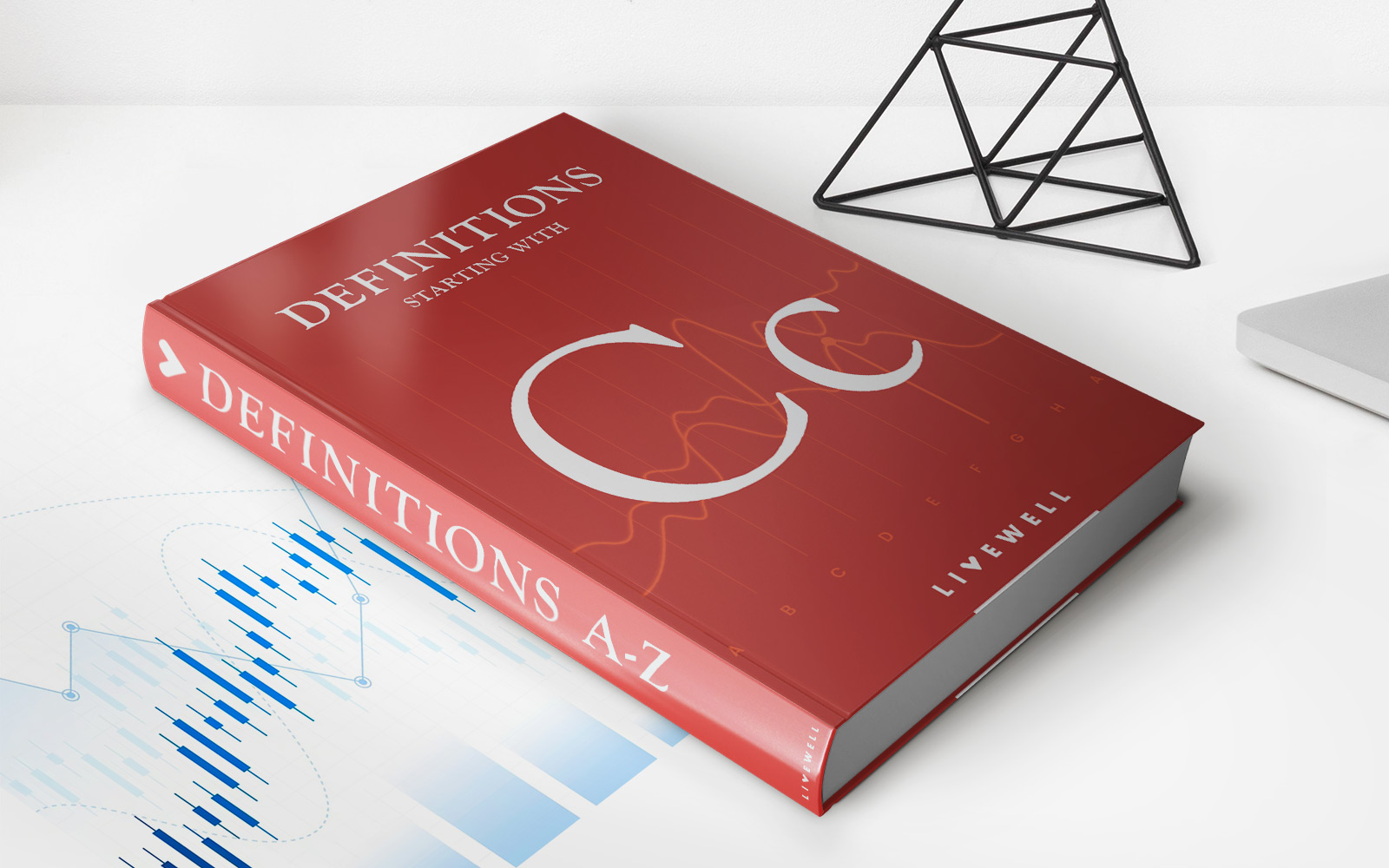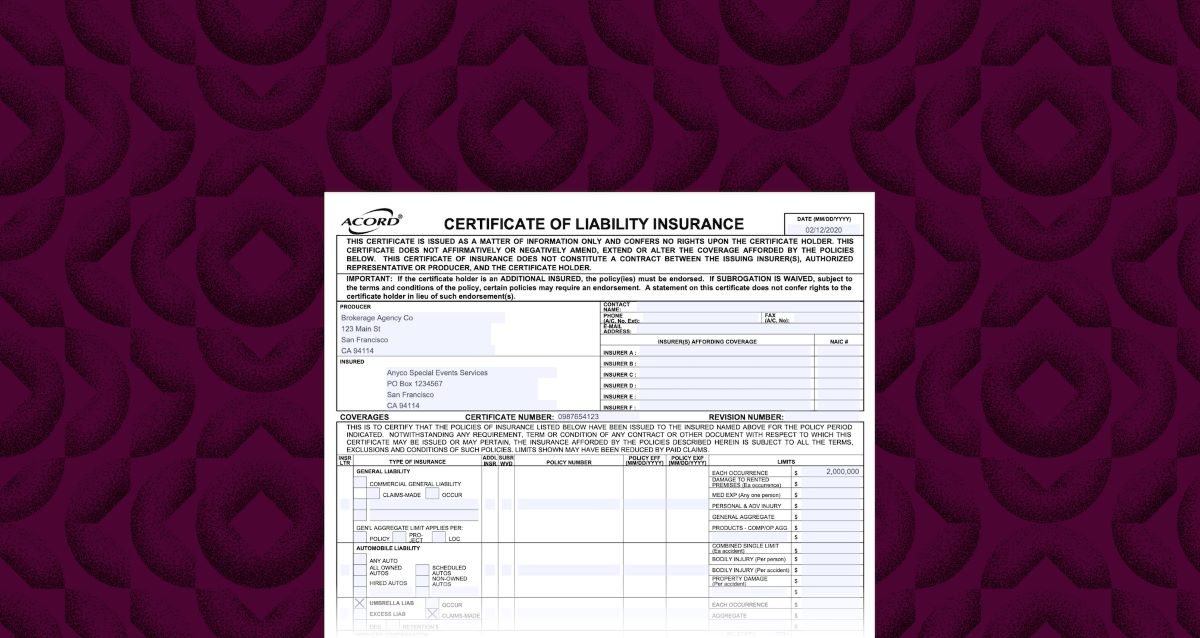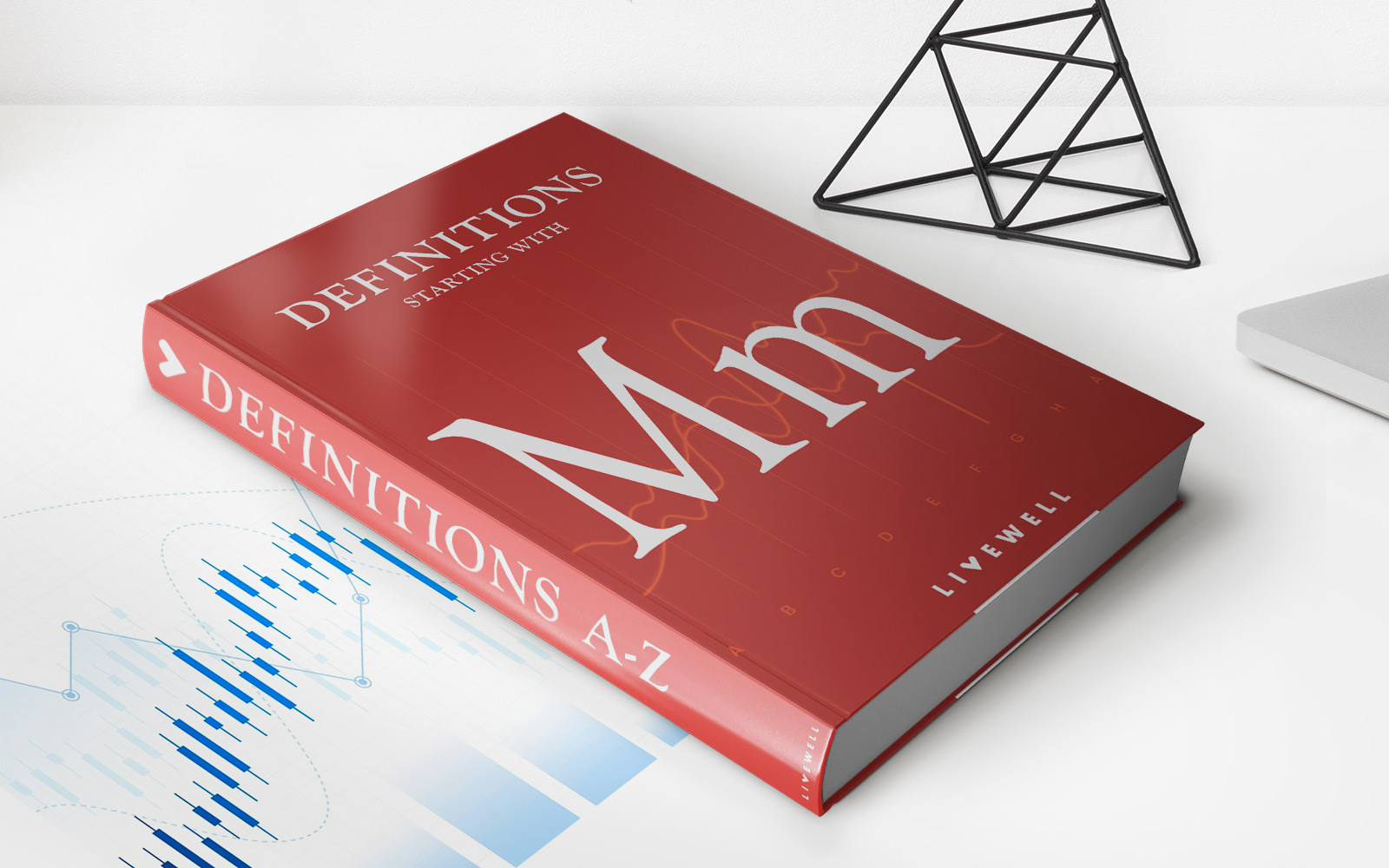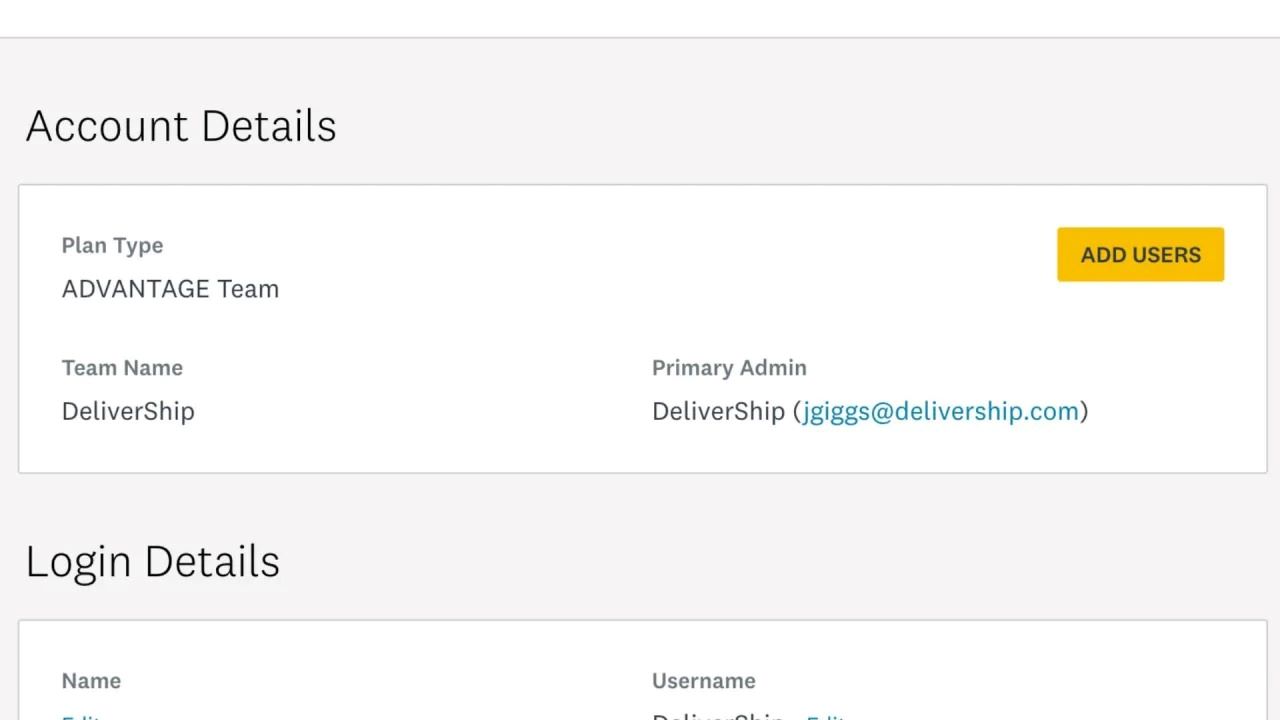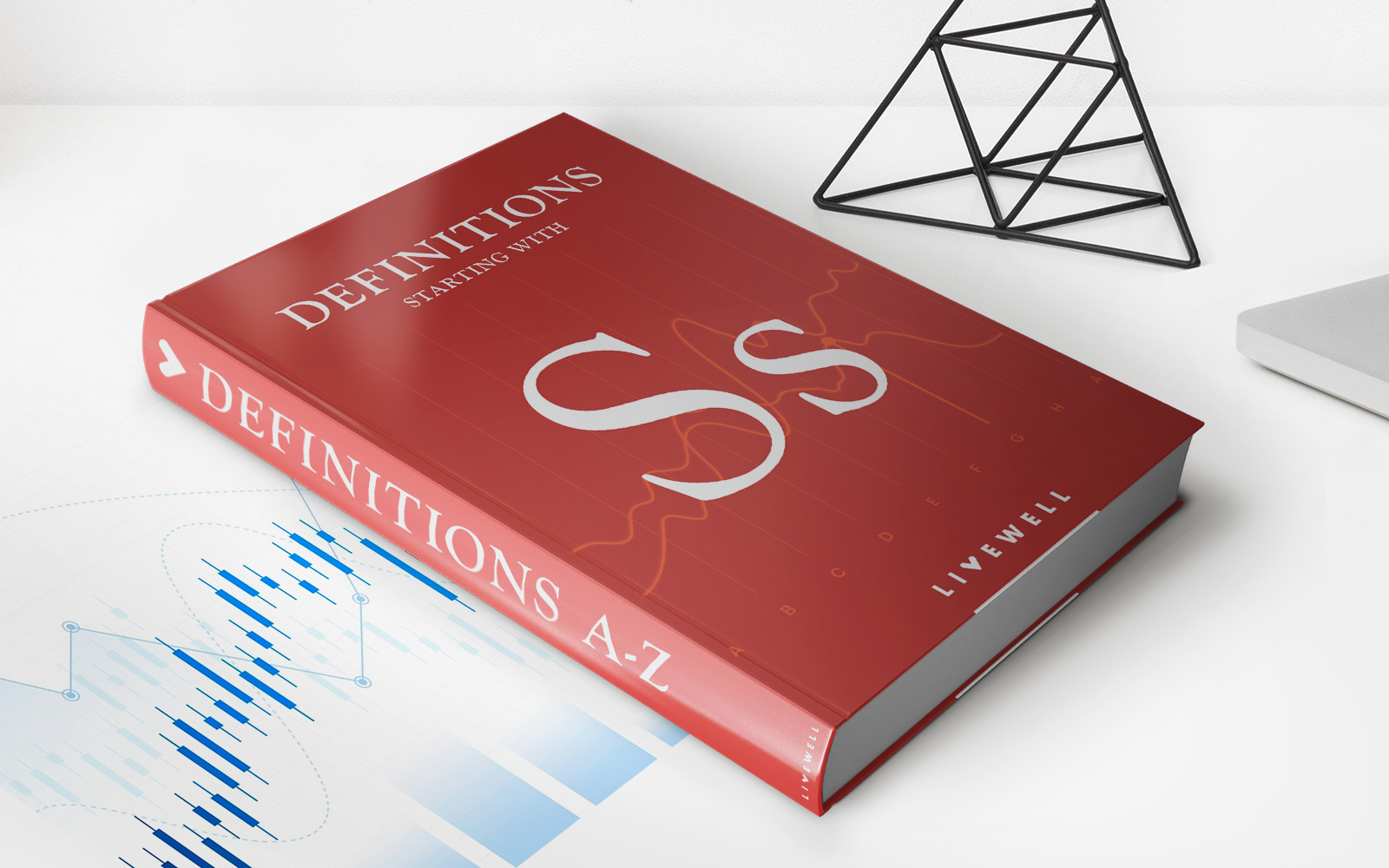Home>Finance>What Information Is Found In The Conditions Part Of An Insurance Policy


Finance
What Information Is Found In The Conditions Part Of An Insurance Policy
Published: November 21, 2023
Explore the essential details contained in the conditions section of an insurance policy and gain valuable insights into the intricacies of finance for comprehensive coverage.
(Many of the links in this article redirect to a specific reviewed product. Your purchase of these products through affiliate links helps to generate commission for LiveWell, at no extra cost. Learn more)
Table of Contents
- Introduction
- Definition of Insurance Policy
- Overview of Insurance Policy Conditions
- Purpose of Conditions in an Insurance Policy
- Key Elements in the Conditions Part of an Insurance Policy
- Coverage Terms and Limits
- Policy Exclusions
- Duty of the Insured
- Claims Process and Reporting Requirements
- Policy Renewal and Cancellation Conditions
- Other Miscellaneous Conditions
- Importance of Reviewing the Conditions Part of an Insurance Policy
- Conclusion
Introduction
Welcome to the world of insurance policies! Whether you’re a seasoned policyholder or a newbie in the world of insurance, understanding the various parts of an insurance policy is crucial. One such important section is the Conditions part of an insurance policy. In this article, we will dive deep into what information is found in the Conditions part, its significance, and why it’s important to pay attention to it.
An insurance policy is a contract between an individual or entity (the insured) and an insurance company (the insurer). It outlines the terms and conditions of the coverage provided by the insurer in exchange for a premium paid by the insured. The Conditions part of the policy defines the rights, responsibilities, and obligations of both parties.
While the Declarations page provides a summary of the policy and the Coverage section outlines the specific risks covered, the Conditions part acts as a set of rules and guidelines for both the insurer and the insured to follow throughout the life of the policy. It ensures that there is a mutual understanding of expectations and responsibilities.
The Conditions part serves as a reference point for policyholders when dealing with claims, policy renewals, cancellations, and other interactions with the insurer. It is crucial to familiarize oneself with the Conditions part to avoid any misunderstandings or surprises down the road.
In the following sections, we will explore the key elements typically found in the Conditions part of an insurance policy and why each element is important to understand. So, let’s dive in and uncover what you need to know!
Definition of Insurance Policy
Before we delve into the details of the Conditions part of an insurance policy, let’s start by understanding what an insurance policy actually is. An insurance policy is a legal contract between the insured (the policyholder) and the insurer (the insurance company), which provides financial protection against specific risks in exchange for regular premium payments.
An insurance policy outlines the terms and conditions of the coverage, including the scope of coverage, policy limits, exclusions, and the obligations of both the insured and the insurer. It serves as a written agreement that defines the rights and responsibilities of both parties.
The insurance policy is typically divided into several sections, each with its own purpose and significance. These sections may include the Declarations page, Coverage section, Conditions part, and Endorsements, among others. The Conditions part is particularly important as it lays out the rules and guidelines that both the insured and the insurer must adhere to throughout the life of the policy.
Insurance policies may vary in complexity and specific terms depending on the type of insurance, such as auto, home, health, or life insurance. However, the fundamental concept remains the same – to provide financial protection and peace of mind in the face of potential risks and losses.
It’s essential to note that while insurance policies provide protection, they are not a guarantee of complete coverage for every situation. Policies often contain exclusions and limitations, and it’s crucial for policyholders to thoroughly read and understand the policy to ensure that they have appropriate and adequate coverage for their specific needs.
Now that we have a clear understanding of what an insurance policy is, let’s move on to exploring the Conditions part in detail to comprehend its significance and the information it entails.
Overview of Insurance Policy Conditions
When it comes to insurance policies, the Conditions section plays a vital role in defining the rights, obligations, and responsibilities of both the insured and the insurer. It sets the ground rules for the policy and outlines the general terms and conditions that govern the agreement.
The Conditions part of an insurance policy covers a wide range of topics and typically includes provisions related to coverage terms and limits, policy exclusions, the duty of the insured, the claims process, policy renewal and cancellation conditions, and other miscellaneous conditions.
Insurance policy conditions are designed to ensure that both parties understand the expectations and obligations associated with the policy. They provide clarity and guidance on how the policy should be interpreted and followed by both the insurer and the insured.
It’s important to remember that conditions may vary depending on the type of insurance policy and the specific insurance company. However, there are common elements that you can expect to find in the Conditions part of most insurance policies.
Understanding the overview of insurance policy conditions is essential to grasp the full implications of the terms and rights outlined in the policy. In the following sections, we will explore the key elements typically found in the Conditions part of an insurance policy, shedding light on each element’s significance and its impact on the policyholder’s experience.
Purpose of Conditions in an Insurance Policy
The Conditions part of an insurance policy serves a crucial purpose in establishing the framework for the agreement between the insured and the insurer. It outlines the specific rules and requirements that both parties must adhere to throughout the duration of the policy. Understanding the purpose of these conditions is key to ensuring a smooth and effective insurance coverage experience.
One of the primary purposes of the Conditions section is to define the rights and responsibilities of the insured and the insurer. It clarifies what is expected from both parties and helps establish a fair and balanced relationship. By clearly stating these expectations, the policy provides a clear understanding of the obligations that each party must fulfill.
Another purpose of the Conditions part is to establish the conditions under which coverage will be provided. This includes specifying the scope of coverage, the limits of coverage, and any applicable deductibles or co-pays. It ensures that both the insured and the insurer have a clear understanding of the extent of protection offered under the policy.
The Conditions part also outlines the conditions under which the insurer will honor a claim. This includes requirements for reporting claims in a timely manner, providing necessary documentation and evidence, and cooperating with the insurer’s investigation process. These conditions help streamline the claims process and ensure that legitimate claims are processed efficiently.
Furthermore, the Conditions part of the policy includes provisions related to policy renewal and cancellation. It outlines the conditions under which the insurer can choose to renew or cancel the policy, as well as any notice periods or requirements. This helps both parties understand the terms under which the policy can be continued or terminated.
Overall, the purpose of the Conditions section is to establish a clear and transparent set of guidelines for both the insured and the insurer. It provides a framework for the insurance agreement, ensuring that both parties are aware of their rights and obligations. By understanding and adhering to the conditions outlined in the policy, policyholders can ensure a smooth and efficient insurance experience.
Key Elements in the Conditions Part of an Insurance Policy
The Conditions part of an insurance policy contains several key elements that are important to understand. These elements define the terms and conditions that both the insured and the insurer must follow. Let’s explore the key elements typically found in the Conditions part of an insurance policy:
- Coverage Terms and Limits: This element outlines the specific risks that are covered under the insurance policy and the limits of coverage for each risk. It provides clarity on what the policy protects against and the maximum amount that the insurer will pay out in the event of a covered loss.
- Policy Exclusions: Exclusions specify the circumstances or events that are not covered by the insurance policy. It’s crucial to review the exclusions carefully to understand what is not covered under your policy. Common exclusions include intentional acts, acts of war, and certain types of natural disasters.
- Duty of the Insured: The duty of the insured outlines the responsibilities and obligations of the policyholder. This may include requirements such as maintaining the property in good condition, providing accurate information to the insurer, and reporting any changes that may affect the policy’s terms or conditions.
- Claims Process and Reporting Requirements: This element outlines the procedures and requirements for filing a claim with the insurer. It specifies the timeframe for reporting a claim, the documentation needed to support the claim, and the steps involved in the claims investigation and settlement process.
- Policy Renewal and Cancellation Conditions: This element details the conditions under which the insurance policy can be renewed or canceled. It may include information about notice periods, premium payment requirements, and any circumstances that may lead to the termination or non-renewal of the policy.
- Other Miscellaneous Conditions: The Conditions part may include additional conditions specific to the insurance policy or the insurer. These may include provisions related to subrogation, arbitration, policy assignment, and other important terms that govern the relationship between the insured and the insurer.
Understanding these key elements within the Conditions part of an insurance policy is crucial for policyholders. It helps them navigate the policy effectively, know what is covered and what is not, fulfill their responsibilities, and ensure a smooth claims process. Policyholders should carefully review and consult with their insurer to fully understand the implications of each element and how they apply to their specific policy.
Coverage Terms and Limits
The section of an insurance policy that outlines the coverage terms and limits is crucial for policyholders to understand. It defines the specific risks that are covered under the policy and establishes the maximum amount the insurer is willing to pay out for each covered event. Let’s delve deeper into this important element:
Coverage Terms: The coverage terms specify the risks or events for which the insurance policy provides protection. For example, in an auto insurance policy, coverage terms may include protection against accidents, theft, or third-party liability. In a homeowners insurance policy, coverage terms may encompass perils such as fire, storm damage, or theft of personal belongings. It’s important to review these coverage terms to ensure that they align with the specific needs and risks of the policyholder.
Coverage Limits: Coverage limits refer to the maximum amount the insurer is willing to pay for a covered event. These limits can vary depending on the type of coverage and the specific policy. For example, an auto insurance policy may have separate limits for bodily injury liability, property damage liability, and comprehensive or collision coverage. Homeowners insurance policies may have different limits for dwelling coverage, personal property, and liability coverage. It’s crucial to understand these limits to ensure that the coverage is sufficient to protect against potential losses.
When reviewing the coverage terms and limits, it’s important to consider any potential gaps in coverage. Some policies may have exclusions or limitations that could leave certain risks uncovered. For instance, an insurance policy may exclude coverage for damage caused by earthquakes or floods. In such cases, policyholders may need to consider purchasing separate coverage or endorsements to address these specific risks.
Additionally, it’s important to be aware of any deductibles or co-payments associated with the coverage. A deductible is the amount the policyholder must pay out-of-pocket before the insurance coverage kicks in. A co-payment is a predetermined percentage or fixed amount that the insured is responsible for paying for certain covered services. Understanding these cost-sharing provisions helps policyholders anticipate their financial responsibilities in the event of a claim.
Before purchasing an insurance policy, it’s crucial to carefully review the coverage terms and limits with the insurer or insurance agent. This ensures that there is a clear understanding of the risks covered, the maximum amount the insurer will pay out, and any potential gaps or limitations in coverage. By fully understanding the coverage terms and limits, policyholders can make informed decisions and secure the appropriate level of protection for their specific needs.
Policy Exclusions
Policy exclusions are an important aspect of insurance policies that policyholders must pay close attention to. Exclusions refer to the specific circumstances or events that are not covered by the insurance policy. Understanding these exclusions is crucial in order to have a clear understanding of the risks that are not protected under the policy. Let’s explore policy exclusions in more detail:
Identifying Exclusions: Insurance policies typically contain a section dedicated to listing the exclusions. This section outlines the specific types of losses or events that the insurer will not provide coverage for. For example, in a homeowners insurance policy, common exclusions may include mold damage, acts of terrorism, or damage due to wear and tear. In auto insurance, exclusions may include damage caused by intentional acts or participation in illegal activities.
Rationale Behind Exclusions: Insurers include exclusions in policies for various reasons. The most common reason is to manage risk and prevent policyholders from intentionally causing losses or seeking coverage for events that are either outside the scope of the policy or fall under common sense expectations. Exclusions also help insurers price their policies appropriately, as covering certain risks may be deemed too costly or impractical.
Assessing Coverage Gaps: Reviewing the policy exclusions is crucial in order to identify any potential coverage gaps. By understanding what is not covered under the policy, policyholders can take steps to address those risks through alternative means or by purchasing additional coverage. For example, if a homeowner’s insurance policy excludes flood damage, the homeowner may need to consider obtaining a separate flood insurance policy to ensure adequate protection.
Seeking Endorsements or Riders: In some cases, policyholders may be able to modify their policies by adding endorsements or riders to cover specific exclusions. These additional provisions may come at an extra cost but can help fill gaps in coverage. For example, a homeowner may opt for an earthquake endorsement or a driver may choose to add comprehensive coverage to address exclusions related to non-collision damage in their auto insurance policy.
Reviewing Policy Language: It’s essential for policyholders to thoroughly read and understand the language used in the exclusions section of their policy. The wording should be clear and specific to avoid ambiguity or misinterpretation. If any language seems unclear or confusing, it’s important to seek clarification from the insurer or an insurance professional.
Understanding and acknowledging policy exclusions is crucial in managing expectations and ensuring that policyholders have a realistic understanding of the coverage provided by their insurance policy. By carefully reviewing the exclusions, policyholders can make informed decisions, explore additional coverage options if necessary, and take steps to mitigate risks that fall outside the scope of their existing policies.
Duty of the Insured
The duty of the insured is an important aspect of insurance policies that defines the responsibilities and obligations of the policyholder. It outlines the actions that the insured must take to ensure compliance with the terms and conditions of the policy. Understanding and fulfilling these duties is crucial to maintaining a valid and effective insurance coverage. Let’s examine the duty of the insured in more detail:
Obligation to Provide Accurate Information: At the time of purchasing an insurance policy, the insured is obligated to provide accurate and complete information to the insurer. This includes details about the insured property, the insured’s personal information, and any other relevant information that may impact the underwriting process. Failing to disclose accurate information may result in a denied claim or policy cancellation.
Duty to Pay Premiums on Time: The insured has the responsibility to pay the premiums specified in the insurance policy according to the agreed-upon schedule. Prompt payment of premiums ensures that the coverage remains in force and protects against potential losses. Failure to pay premiums on time may result in a lapse of coverage or policy cancellation.
Maintenance of the Insured Property: The insured has a duty to take reasonable measures to maintain the insured property in good condition. This may include regular maintenance, repairs, and implementing safety measures to prevent losses. Failing to maintain the property appropriately may result in reduced coverage or denial of a claim.
Cooperation in the Claims Process: When a loss occurs, the insured has the duty to promptly notify the insurer and provide all necessary documentation and information required for the claims process. This includes providing a detailed description of the incident, submitting any supporting evidence, and assisting the insurer in the investigation of the claim. Failure to cooperate may result in delays in the claims process or denial of the claim.
Notification of Changes: The insured has the duty to notify the insurer of any changes that may affect the terms or conditions of the policy. This may include changes in the property address, changes in the use of the property, or changes in the insured’s personal circumstances. Failure to notify the insurer of such changes may result in a gap in coverage or policy cancellation.
By understanding and fulfilling the duty of the insured, policyholders can ensure a smooth and effective insurance coverage experience. It is important to thoroughly review the policy to understand the specific duties and obligations outlined. If there are any uncertainties or questions regarding the duty of the insured, it is advisable to discuss them with the insurer or an insurance professional to ensure compliance and avoid any potential conflicts in the future.
Claims Process and Reporting Requirements
Understanding the claims process and reporting requirements is crucial for policyholders to effectively navigate the insurance claims process. When an insured event occurs, such as an accident, damage, or loss, it is important to know the steps to initiate a claim and fulfill the reporting obligations. Let’s explore the claims process and reporting requirements in more detail:
Immediate Steps: In the event of a loss or incident that may lead to a claim, it is important to take immediate steps to ensure safety and mitigate further damage. This may include seeking medical attention, contacting appropriate authorities, or taking measures to prevent further property damage. After addressing immediate concerns, policyholders should promptly notify their insurance company about the incident.
Reporting the Claim: Policyholders are typically obligated to report a claim to the insurer as soon as possible. The insurance policy may specify a specific time frame within which the claim must be reported. It is important to provide all necessary information and documentation related to the incident, such as a detailed description of what happened, supporting evidence, and any witness statements if available. Failing to report a claim in a timely manner may result in denial of coverage.
Claims Investigation: Once a claim is reported, the insurance company will initiate an investigation to assess the validity and extent of the claim. This may involve collecting additional evidence, obtaining police reports, or conducting interviews. It is important for the insured to cooperate fully with the investigation, providing any requested information or assistance as needed.
Claim Evaluation and Settlement: After completing the investigation, the insurance company will evaluate the claim based on the policy terms and conditions. They will determine the coverage, assess any applicable deductibles, and calculate the appropriate settlement amount. Upon reaching an agreement with the insured, the insurer will provide the settlement payment.
Dispute Resolution: In some cases, there may be disagreements between the insured and the insurer regarding the claim settlement. Policyholders have the right to dispute the insurer’s decision through various dispute resolution mechanisms, such as arbitration or mediation. It is important to review the policy terms regarding dispute resolution and seek legal advice if necessary.
Understanding the claims process and fulfilling the reporting requirements is essential for a smooth and efficient settlement. Policyholders should carefully review their insurance policy to understand the specific steps, timelines, and documentation requirements for reporting and processing a claim. By promptly reporting the claim, cooperating with the insurer, and providing all necessary information, policyholders can ensure a fair and timely resolution to their claim.
Policy Renewal and Cancellation Conditions
Policy renewal and cancellation conditions are important aspects of an insurance policy that policyholders should be familiar with. These conditions define the terms under which the policy can be renewed or canceled by the insured or the insurer. Understanding these conditions is essential to ensure continuous coverage and avoid any unexpected gaps or termination of the policy. Let’s explore the policy renewal and cancellation conditions in more detail:
Renewal: The policy renewal conditions outline the terms under which the insurance policy can be renewed at the end of the policy term. This may include conditions such as timely premium payments and a claim-free history. It’s important for policyholders to review the policy renewal conditions and ensure compliance so that the coverage continues without interruption.
Cancellation by the Insured: The policy may specify conditions under which the insured can choose to cancel the policy before the expiration date. This may include providing advance notice to the insurer, paying any applicable cancellation fees, or meeting specific requirements outlined in the policy. It’s important to familiarize yourself with the cancellation conditions to understand the process and any potential financial implications.
Cancellation by the Insurer: The insurer may have the right to cancel the policy under certain circumstances. These circumstances can vary depending on the type of insurance and the specific policy. Common reasons for insurer-initiated cancellations include non-payment of premiums, misrepresentation of information, or an increased risk profile. The policy should outline the notice period and any refund or credit provisions in the event of cancellation by the insurer.
Non-Renewal: In some cases, the insurer may choose not to renew the policy at the end of the policy term. This may occur if there have been significant changes in the risk profile or if the insurer is no longer offering coverage for that particular type of risk. Policyholders should review the policy to understand the non-renewal conditions and be aware of the need to secure alternative coverage if necessary.
It is crucial for policyholders to review the renewal and cancellation conditions in their insurance policy carefully. Make sure to note important dates, such as renewal or cancellation notice periods, to ensure compliance with the policy requirements. If there are any questions or concerns about the renewal or cancellation process, it is recommended to reach out to the insurer or insurance agent for clarification.
Being proactive and informed about the renewal and cancellation conditions ensures that policyholders maintain continuous coverage and have a clear understanding of the options available to them.
Other Miscellaneous Conditions
In addition to the core elements of an insurance policy, there are often other miscellaneous conditions that policyholders should be aware of. These conditions may vary depending on the type of insurance and the specific policy, and they address additional terms and provisions that govern the insurance agreement. Let’s explore some common miscellaneous conditions that may be found in an insurance policy:
Subrogation: Subrogation is a provision that allows the insurance company to seek reimbursement from a responsible third party for any payments made on a claim. If the insured receives compensation from another party for the same loss, the insurance company may have the right to recover the amount it paid out.
Arbitration: Some insurance policies may include an arbitration clause, which means that any disputes or disagreements between the insured and the insurer are to be resolved through arbitration rather than going to court. Arbitration provides a streamlined and less formal alternative to litigation, potentially minimizing costs and expediting dispute resolution.
Policy Assignment: The policy may include provisions regarding the transfer or assignment of the policy to another party. This allows the insured to transfer the rights and responsibilities of the policy to someone else, such as in the case of selling a property or transferring ownership.
Policy Lapse: A policy lapse occurs when the policyholder fails to pay the premium within the specified grace period, resulting in the termination of the policy. This condition is important to be aware of to avoid a lapse in coverage, as reinstating a lapsed policy may require additional steps and proof of insurability.
Other Specific Conditions: Depending on the type of insurance and the policy, there may be other specific conditions outlined. For example, in health insurance, there may be conditions related to pre-authorization for certain medical procedures or coverage limitations for specific treatments. It’s important to review and understand these specific conditions to ensure the policy’s terms and limitations are clear.
Policyholders should carefully review the miscellaneous conditions outlined in their insurance policy. If any of the conditions are unclear or require further clarification, it is advisable to consult with the insurer or an insurance professional. Understanding these miscellaneous conditions helps policyholders have a comprehensive understanding of their policy’s terms and conditions, allowing them to navigate the insurance agreement more effectively.
Importance of Reviewing the Conditions Part of an Insurance Policy
Reviewing the Conditions part of an insurance policy is of utmost importance for policyholders. This section of the policy outlines the rights, obligations, and responsibilities of both the insured and the insurer. Understanding and familiarizing yourself with the conditions ensures that you have a clear understanding of your coverage and can navigate the insurance process effectively. Here are some reasons why reviewing the Conditions part is crucial:
Know Your Rights and Responsibilities: The Conditions part of the policy clearly defines your rights as a policyholder and the responsibilities you have towards the insurer. It outlines what you can expect from the insurer and what is expected from you. By understanding these rights and responsibilities, you can ensure that you are fulfilling your obligations and holding the insurer accountable for their part of the agreement.
Avoid Coverage Gaps and Surprises: By reviewing the Conditions part, you can identify any coverage gaps or exclusions that may exist. This helps you understand the specific risks that are not covered by the policy, allowing you to explore additional coverage options or take preventative measures to mitigate those risks. Being aware of these exclusions helps avoid unpleasant surprises when filing a claim and ensures that you have appropriate coverage for your needs.
Comply with Reporting Requirements: The Conditions part typically outlines the reporting requirements and timelines for filing a claim. By understanding these requirements, you can ensure that you report any incidents or losses promptly, preventing a denial of a claim due to late reporting. Complying with the reporting requirements helps streamline the claims process and increases the likelihood of a successful claim settlement.
Effectively Manage Policy Renewals and Cancellations: The Conditions part specifies the conditions under which the policy can be renewed or canceled. By reviewing these conditions, you can ensure that you meet the renewal criteria and avoid any unexpected non-renewals or policy cancellations. This allows for continuous coverage and protects against potential gaps in protection.
Understand the Claims Process: Reviewing the Conditions part helps you understand the claims process and any specific requirements or procedures that need to be followed. This includes providing detailed information, supporting documentation, and cooperating with the insurer’s claims investigation. Understanding the claims process ensures a smoother experience when filing a claim and increases the likelihood of a fair and timely settlement.
It is important to thoroughly review the Conditions part of your insurance policy and seek clarification from the insurer or an insurance professional if you have any questions or concerns. By doing so, you can ensure that you have a comprehensive understanding of your coverage, fulfill your obligations as a policyholder, and effectively navigate the insurance agreement. Remember, it is better to be informed and aware of your policy’s conditions than to be caught off-guard during a claim or policy event.
Conclusion
Understanding the Conditions part of an insurance policy is essential for every policyholder. This section lays out the rules, obligations, and rights that govern the insurance agreement between the insured and the insurer. By reviewing and comprehending the Conditions part, policyholders can ensure they have the necessary coverage, fulfill their responsibilities, and navigate the insurance process effectively.
The key elements found in the Conditions part, such as coverage terms and limits, policy exclusions, the duty of the insured, claims process and reporting requirements, and policy renewal and cancellation conditions, provide a comprehensive framework for policyholders to follow. These elements help policyholders understand the scope of coverage, potential gaps or limitations, and their responsibility in filing claims and maintaining the policy.
Reviewing the Conditions part allows policyholders to make informed decisions about their coverage needs and take appropriate actions to mitigate risks not covered by the policy. It also helps policyholders understand the claims process and fulfill reporting requirements promptly, preventing any potential complications during the claims settlement process.
Additionally, policyholders should pay close attention to policy renewal and cancellation conditions to avoid any unexpected lapses in coverage or termination of the policy. Understanding the renewal criteria and cancellation provisions ensures continuous protection and allows policyholders to take necessary actions, such as seeking alternative coverage, if needed.
In conclusion, by thoroughly reviewing and understanding the Conditions part of an insurance policy, policyholders can effectively manage their coverage, navigate the claims process, and protect themselves against potential risks. It is advisable to consult with the insurer or an insurance professional to clarify any doubts or questions regarding the policy’s conditions. By being proactive and informed, policyholders can have peace of mind knowing they have the right coverage and are well-prepared in the event of a claim or policy event.


